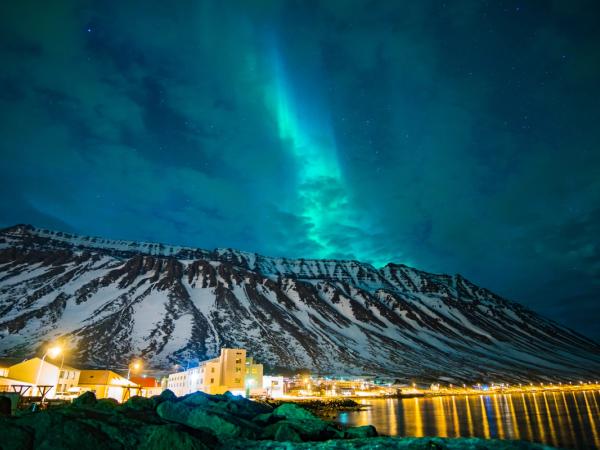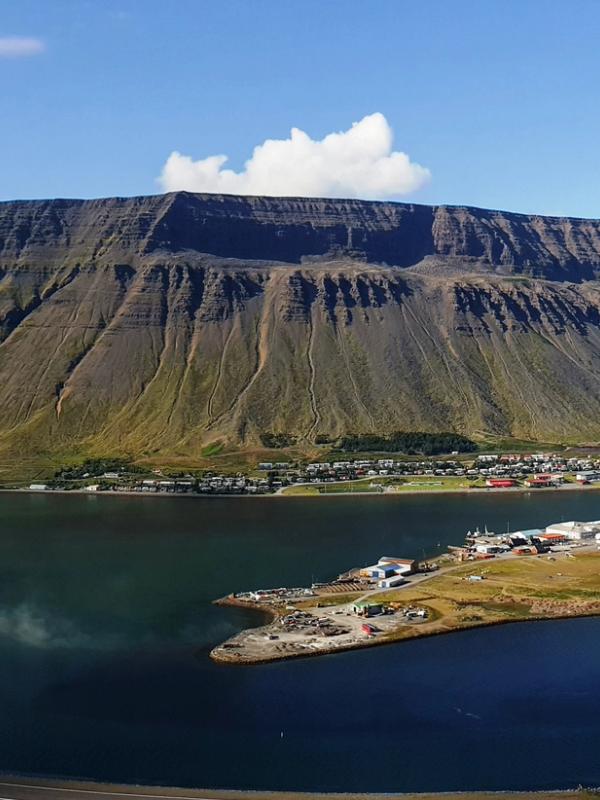
Ultimate Guide to Ísafjörður: Sights, Food & Day Trips
Ísafjörður, the unofficial capital of the Westfjords, is a small town with a big sense of place. Tucked between steep, flat-topped mountains and a curving fjord, it feels both remote and welcoming—a working harbor with fishing boats on the docks, cafés tucked into historic wooden houses, and trails leading straight from town into the wild. I’ve always found it the perfect pause point on a Westfjords road trip: compact, walkable, and alive with local culture, yet just a short journey from hot pools, bird cliffs, and the untouched wilderness of Hornstrandir.
Ísafjörður at a Glance
- Population: ~2,700 (2025).
- Location: On a sand spit in Skutulsfjörður, an inlet of Ísafjarðardjúp, Westfjords.
- Airports: Ísafjörður (IFJ) with regular flights to Reykjavík Domestic (RKV).
- Time Zone: GMT year-round (no daylight saving).
- Currency: Icelandic króna (ISK).
- Dialing Code: +354.
- Why go: Hornstrandir day trips, Dynjandi waterfall, golden-sand beaches, fjord hiking, maritime history, and small-town café culture.
When to Visit Ísafjörður
Summer is the best time to experience Ísafjörður and the Westfjords. Roads are open, boats are running, and the dramatic landscapes are at their most accessible. With long daylight hours, lively harbor evenings, and no real crowds to speak of, July and August are the region at its most inviting. Spring and autumn bring a wilder, quieter feel, while winter is best for those who don’t mind snow, short days, and plenty of cozy indoor time.
Summer in Ísafjörður (June–August): The Midnight Sun
This is when Ísafjörður shines. Expect nearly 24-hour daylight, boat departures for Hornstrandir most days, and easy drives to highlights like Dynjandi waterfall, Flateyri’s golden-sand beach, and the cliff-edge platform at Bolafjall. Seafood restaurants and cafés are in full swing, and although the weather can still flip from sun to sea mist quickly, the plus side is that you won’t be battling crowds.
Spring & Autumn in Ísafjörður (Apr–May, Sep–Oct): Quiet & Colorful
In spring, waterfalls surge with meltwater and birdlife returns to the cliffs. Trails close to town often clear by May, making early-season hikes possible. September brings crisp air and copper-colored hillsides, with nights dark enough for northern lights. Many services, from ferries to museums, still operate but often on shorter hours, so double-check schedules before you head out.
Winter in Ísafjörður (Nov–March): Snow, Silence & Aurora
Ísafjörður in winter is a different world—short daylight, snow-covered mountains, and a peaceful pace. On clear nights, the aurora is often visible. Road conditions can be tough, but the Vestfjarðagöng and Dýrafjarðargöng tunnels keep key routes open more reliably than before. This is the season for skiing at nearby resorts, soaking in the town pool, and tucking into hearty seafood while storms roll across the fjord.
Getting There and Around
Tucked deep in the Westfjords, Ísafjörður isn’t the easiest place to reach—but that’s part of its charm. Whether you come by ferry, road, or plane, the journey is as memorable as the destination.
Getting to Ísafjörður
Most travelers arrive by road, either looping north from Reykjavík through the Westfjords or taking the Baldur ferry across Breiðafjörður from Stykkishólmur to Brjánslækur (reserve vehicle space in advance). From Brjánslækur, it’s about a two-hour drive along scenic fjords to Ísafjörður.
The overland option is Route 60, which now includes the Dýrafjarðargöng tunnel, opened in 2020, cutting out a mountain pass and making year-round travel far easier. Another key link is the Vestfjarðagöng tunnel, connecting Ísafjörður to nearby villages and fjords. Even so, Westfjords roads can be slow-going; expect winding curves, gravel stretches, and frequent photo stops.
For those short on time, domestic flights connect Reykjavík’s domestic airport (RKV) with Ísafjörður (IFJ) in about 40 minutes. This is the fastest way in, and the approach to Ísafjörður’s small airport is breathtaking – however, flying means missing some of the epic coastal scenery along the way.
Getting Around Town
Like all towns in Iceland, Ísafjörður is compact and walkable. The harbor, old quarter, museums, and cafés are all within 10–15 minutes on foot. Parking is easy, with plenty of spaces around the center and larger lots at the edge of town for campervans.
There is one caveat though; if you’re staying at the campsite, know that it’s a bit outside of town. It takes 5 minutes in the car to reach town, but almost an hour on foot.
Buses in Ísafjörður
Local buses connect Ísafjörður with neighboring villages like Bolungarvík, Suðureyri, and Flateyri. They’re handy if you want to explore without driving, though timetables are limited – plan ahead, especially outside summer.
Walking & Cycling
Most visitors explore town on foot, but in summer, cycling is a good way to follow the shoreline paths or head to nearby valleys. In winter, stick to walking, as icy roads and steep climbs make bikes less practical.

What to See & Do in Ísafjörður
Ísafjörður may be small, but it offers a mix of history, culture, and nature that captures the essence of the Westfjords. From preserved trading houses to fjord-hugging hikes, you don’t need to go far from the harbor to find something memorable.
Landmarks & City Strolls
The town itself is a sight to explore: timber houses, working boats, and mountains rising almost vertically from the fjord.
Old Town & Harbor
The historic quarter around Neðstakaupstaður is one of Iceland’s best-preserved trading posts. Timber warehouses from the 18th century now house cafés, galleries, and the Maritime Museum. The harbor remains active, with fishing boats landing their catch alongside summer ferries to Hornstrandir.

Naustahvilft (“The Troll Seat”)
This natural bowl carved into the mountainside above the airport runway is one of Ísafjörður’s most accessible viewpoints. The steep but short climb rewards you with sweeping views across the fjord and over the clustered rooftops of town. Allow 45–90 minutes round-trip, depending on your pace.
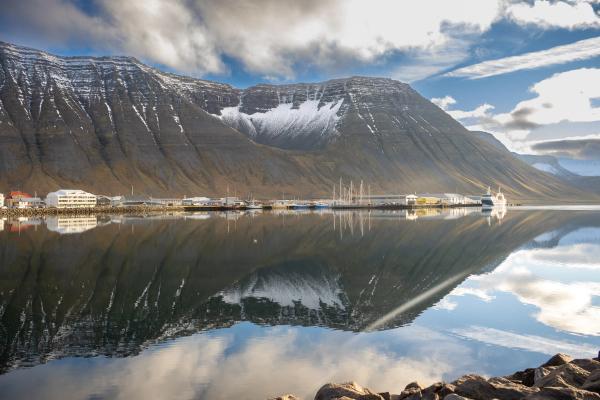
Museums & Culture in Ísafjörður
Ísafjörður and nearby villages, Bolungarvík and Súðavík, together boast an impressive cultural line-up, with museums that highlight the daily life and seafaring traditions of the Westfjords.
Westfjords Heritage Museum (Maritime Museum)
Located in the historic Neðstakaupstaður waterfront buildings, this museum dives into the region’s fishing and trade heritage. Exhibits include restored boats, fishing gear, and personal stories from sailors and their families, offering a vivid picture of life in a remote fjord community.
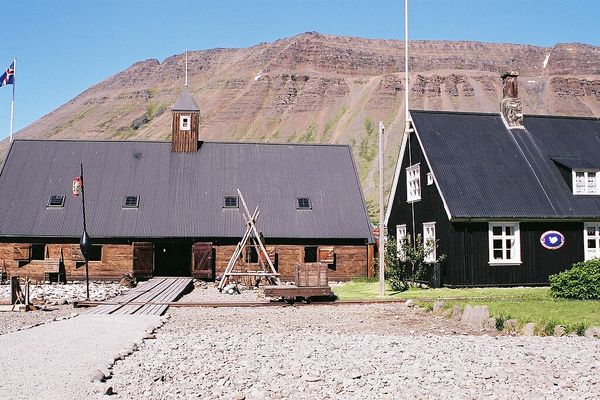
Museum of Everyday Life (Hversdagssafn)
Small, creative, and deeply personal, this museum shines a light on the rhythms of daily life in the Westfjords. Using sound recordings, objects, and stories, it’s a reminder that culture is made up of ordinary moments as much as grand events. Open daily in summer; by request in winter.
Ósvör Maritime Museum (Bolungarvík)
Set on the shoreline just outside Bolungarvík, this open-air museum recreates a 19th-century fishing station, complete with turf-roofed huts and old rowing boats. The highlight is the local guide dressed in a traditional sealskin suit, demonstrating the harsh realities of life at sea. It’s one of the most atmospheric ways to connect with the Westfjords’ seafaring past.
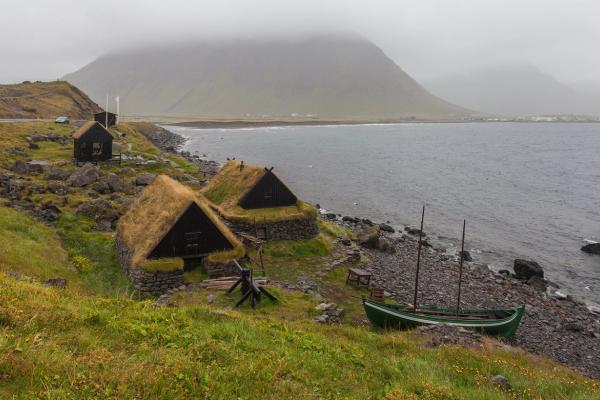
Arctic Fox Centre (Súðavík)
About 20 20-minute drive from Ísafjörður, this center is dedicated to Iceland’s only native land mammal. Exhibits cover research, folklore, and conservation, while rescued foxes can sometimes be seen in the outdoor enclosures. It's an excellent stop for families or as part of a journey through Ísafjarðardjúp.
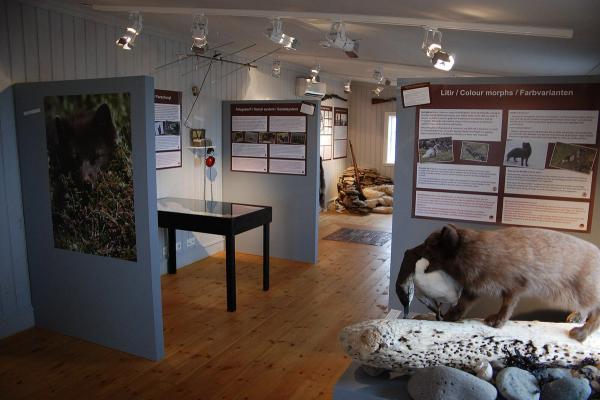
Ísafjörður Swimming Pool
The town pool is a local favorite, with hot tubs, a sauna, and lanes for swimming. It’s affordable, family-friendly, and open year-round – ideal for relaxing after a chilly boat trip or a winter hike. Nearby Bolungarvík also has a good swimming pool.
For more adventurous soaks, plan a longer road trip to Arnarfjörður or hunt down the tucked-away pools around Ísafjarðardjúp.
Classic Ísafjörður Experiences
A visit here isn’t complete without a few quintessential Westfjords experiences that showcase the wildness just beyond town.
Day Trip to Hornstrandir Nature Reserve (Summer)
One of Iceland’s most remote wilderness areas, Hornstrandir is roadless and stunningly wild. Day tours leave by boat from Ísafjörður in summer, dropping you into a world of Arctic foxes, seabird cliffs, and silent valleys. Most trips last 10–12 hours. Bring sturdy boots, layers, and food.
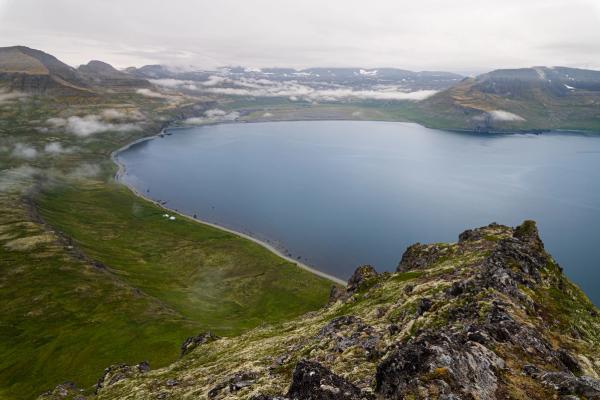
Drive to Dynjandi
Arguably Iceland’s most beautiful waterfall, Dynjandi is a tiered cascade that fans out like a bridal veil. It’s around a 1.5-hour drive each way, with shorter falls along the walking path to the main curtain. Combine it with other fjord stops for a rewarding day trip.
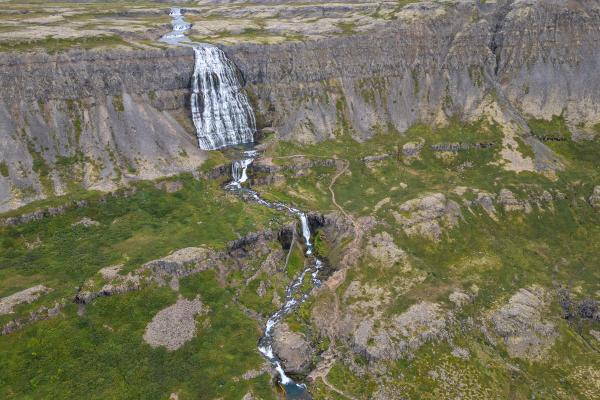
Bolafjall View Platform (Bolungarvík)
This dramatic glass-and-steel skywalk juts out from the cliffs above Bolungarvík, offering dizzying views over Ísafjarðardjúp and the Greenland Sea. The steep road up is usually open in summer only—check conditions before you go.
Valagil Gorge (near Súðavík)
A short, easy hike leads to this striking gorge at the head of Álftafjörður. Basalt cliffs, a slender waterfall, and lush greenery make it one of the most rewarding quick stops near Ísafjörður.
Eating & Drinking in Ísafjörður
Despite its size, Ísafjörður punches above its weight when it comes to food and drink. Fishing boats still land their catch in the harbor, bakeries turn out classic Icelandic treats, and cafés double as community hubs.
What to Expect
Seafood is the star here. Cod, halibut, and wolffish come straight from the fjords to the table, often prepared simply and served family-style. Lamb remains a local staple, appearing in stews and roasts, while vegetarians will find hearty soups and salads on most menus. Dining hours can be shorter than in Reykjavik or Akureyri, so it’s smart to check opening times – especially outside summer.
Where to Try It
- Tjöruhúsið – Famous across Iceland for its no-menu, all-you-can-eat seafood feasts in a creaky timber house by the harbor. Expect a line-up of whatever the boats brought in that morning. Booking ahead is essential in summer.
- Gamla Bakaríið – Ísafjörður’s beloved old bakery, serving fresh bread, kleinur (Icelandic doughnuts), and other road-trip essentials.
- Edinborg Culture House Café – A central spot for coffee, cakes, and light lunches, housed in a handsome 19th-century building that often hosts exhibitions and events.
- Heimabyggð – A newer addition to town, focusing on modern small plates and local ingredients in a stylish but casual setting.
- Húsið – A friendly café-bar-restaurant hybrid with good coffee by day, hearty dinners in the evening, and occasional live music.
Day Trips from Ísafjörður
Ísafjörður is the gateway to some of the Westfjords’ most dramatic scenery. From clifftop skywalks to golden beaches and roadless wilderness, you can reach a surprising variety of landscapes within a day.
The Northern Fjords: Bolungarvík & Ósvör
Head north through the Vestfjarðagöng tunnel to Bolungarvík, the last town on this stretch of coast. From here, a summer-only road climbs to the Bolafjall skywalk, a glass platform hanging over 600-meter cliffs with dizzying views across Ísafjarðardjúp. Back in Bolungarvík, the Ósvör Maritime Museum recreates a 19th-century fishing station with turf huts, boats, and gear that bring the old herring days to life.

Dynjandi & Arnarfjörður
No trip to the Westfjords is complete without visiting Dynjandi, a 100-meter tiered cascade and absolute jewel of the Westfjords. Combine it with stops around Arnarfjörður, including viewpoints and the Reykjafjarðarlaug Hot Spring, for golden-hour light over the fjords and a short walk among the smaller falls leading up to Dynjandi’s main veil.
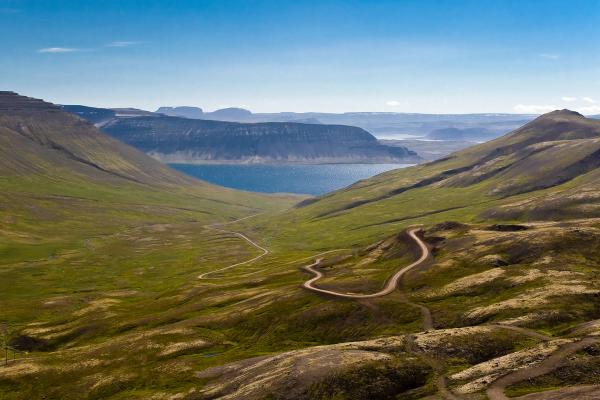
Önundarfjörður & Flateyri
Just 20 minutes from Ísafjörður, Önundarfjörður is a gentler fjord lined with birch groves and summer cottages. At its head lies Holtsfjara, one of Iceland’s few golden-sand beaches, with a photogenic wooden pier stretching into turquoise shallows. The nearby fishing village of Flateyri has a friendly café and art scene, perfect for a half-day outing.
Hornstrandir (Boats from Ísafjörður, Bolungarvík, Súðavík)
For wilderness, nothing compares to Hornstrandir, the uninhabited peninsula north of Ísafjörður. Boats run from town, Bolungarvík, and Súðavík in summer, offering drop-offs for day hikes between fjords or gentler visits to the abandoned village of Hesteyri, where you can still get coffee and cake in a historic house. Trips depend on the weather and usually take 8–12 hours. Bring layers, food, and expect no phone signal.

A Short History of Ísafjörður
Ísafjörður’s story begins on a sand spit in Skutulsfjörður, one of the few places along this steep, fjord-carved coast where building and docking were possible. Its natural harbor made it a valuable site for seasonal fishing camps long before it became a permanent town.
Under Danish rule in the 16th and 17th centuries, Ísafjörður developed into a trading post, with merchants setting up warehouses and controlling the rich cod fisheries of the Westfjords. The preserved timber buildings at Neðstakaupstaður, now home to museums and cafés, date back to this era and remain some of Iceland’s oldest surviving houses.
By the late 19th century, Ísafjörður had grown into the region’s commercial and cultural hub. Fishing, especially herring, drove prosperity, and the town gained schools, hospitals, and cultural institutions that served the wider Westfjords. Steam trawlers, shipyards, and processing plants lined the harbor, tying daily life to the fortunes of the sea.
In the 20th century, the herring collapse hit hard, but Ísafjörður adapted by diversifying its economy and building up services for education, arts, and tourism. Festivals like Aldrei fór ég suður (“I Never Went South”), a music festival founded in 2004, reflect that creative spirit.
Today, with around 2,700 residents, Ísafjörður still balances its maritime roots with its role as the cultural heart of the Westfjords.

Ísafjörður: Heart of the Westfjords
Ísafjörður isn’t just the largest town in the Westfjords—it’s the place where the region comes into focus. Fishing boats still shape daily life, mountain trails begin right from the edge of town, and cafés fill with locals swapping stories over strong coffee. Stay a while and you’ll find it’s as much about the people as the scenery: a welcoming hub that makes it easy to explore the fjords, islands, and wilderness beyond, then return each night to a harbor town that feels both lively and remote.

